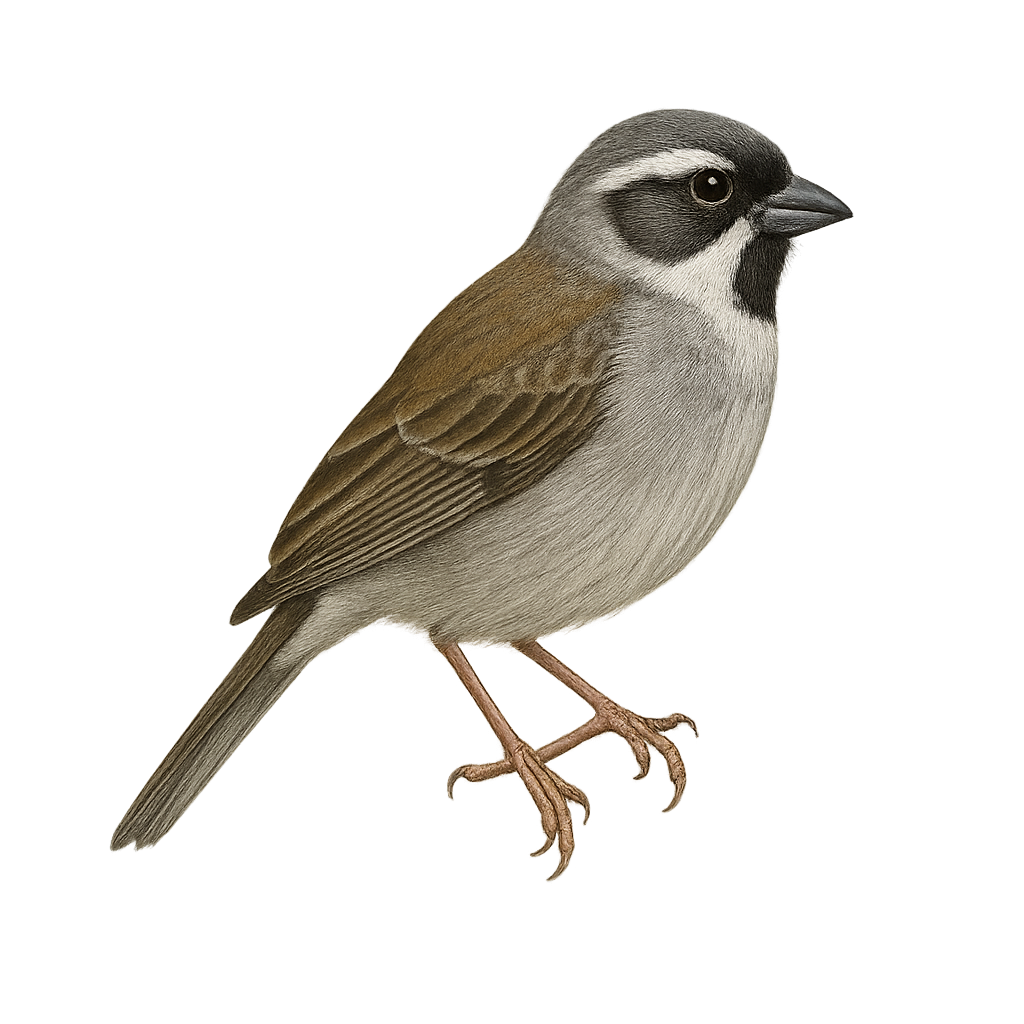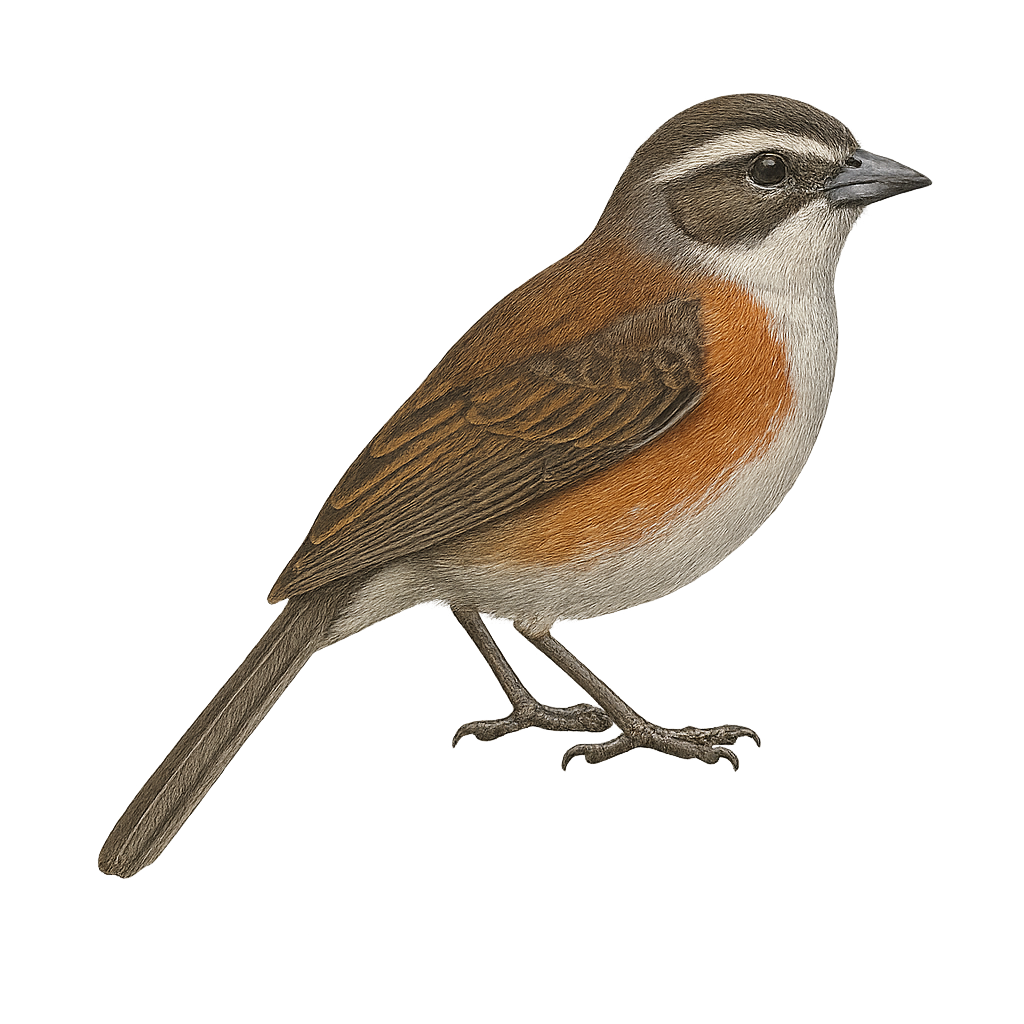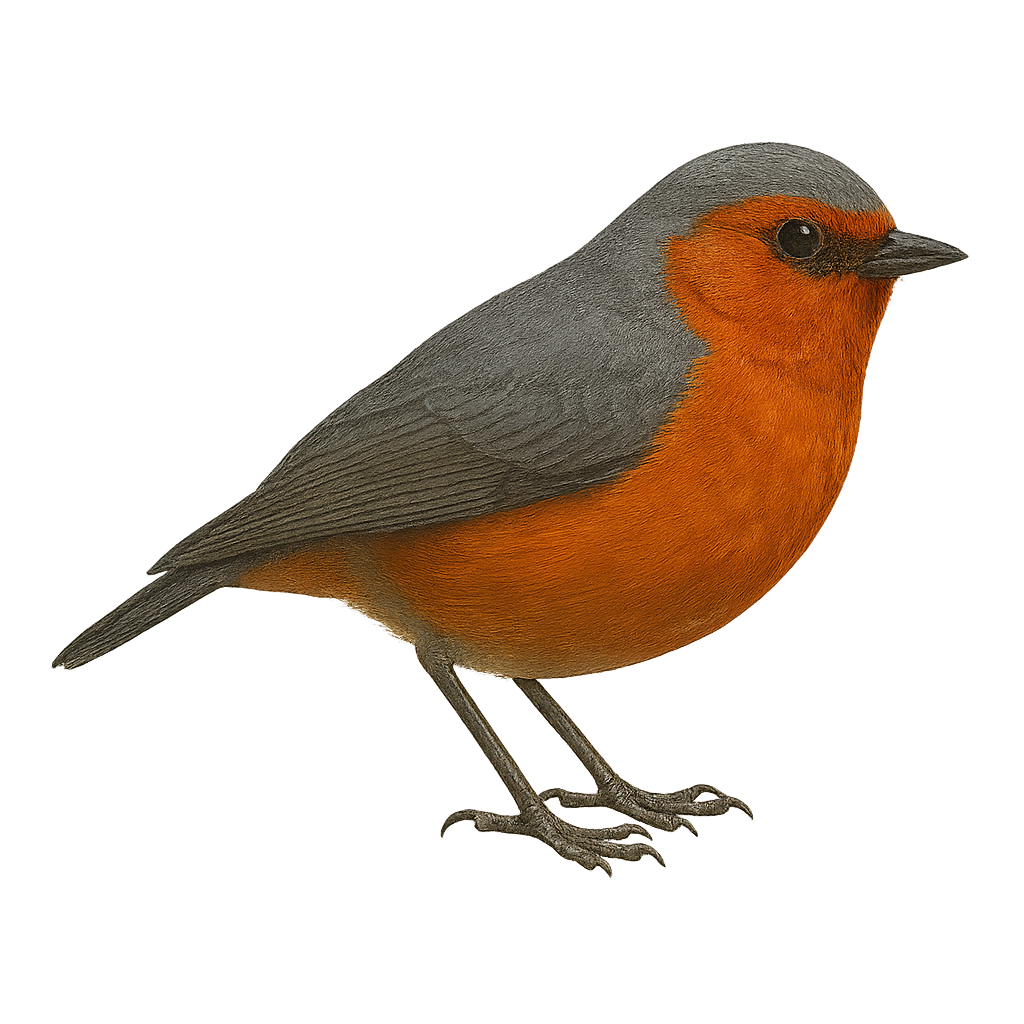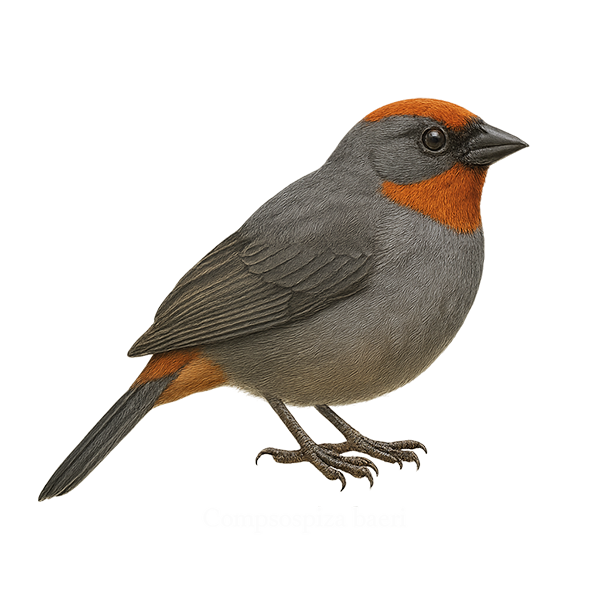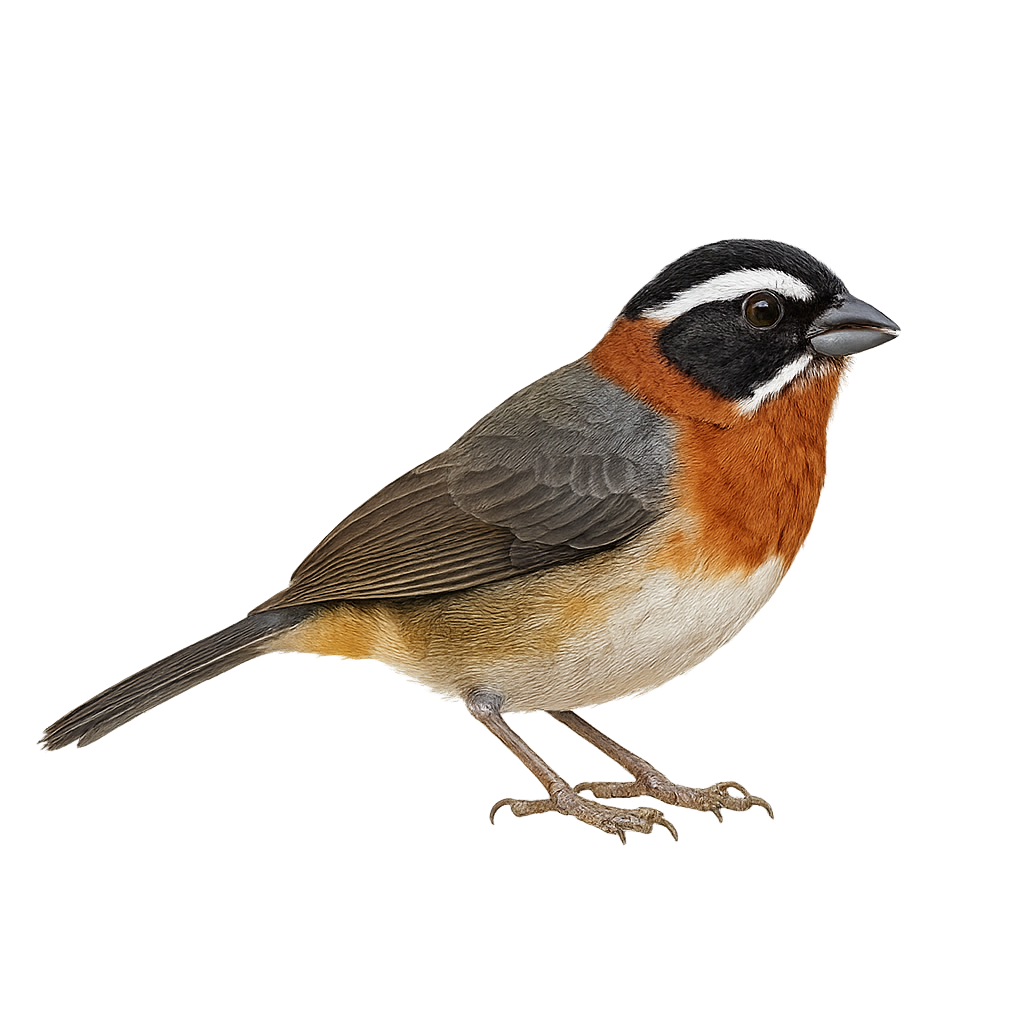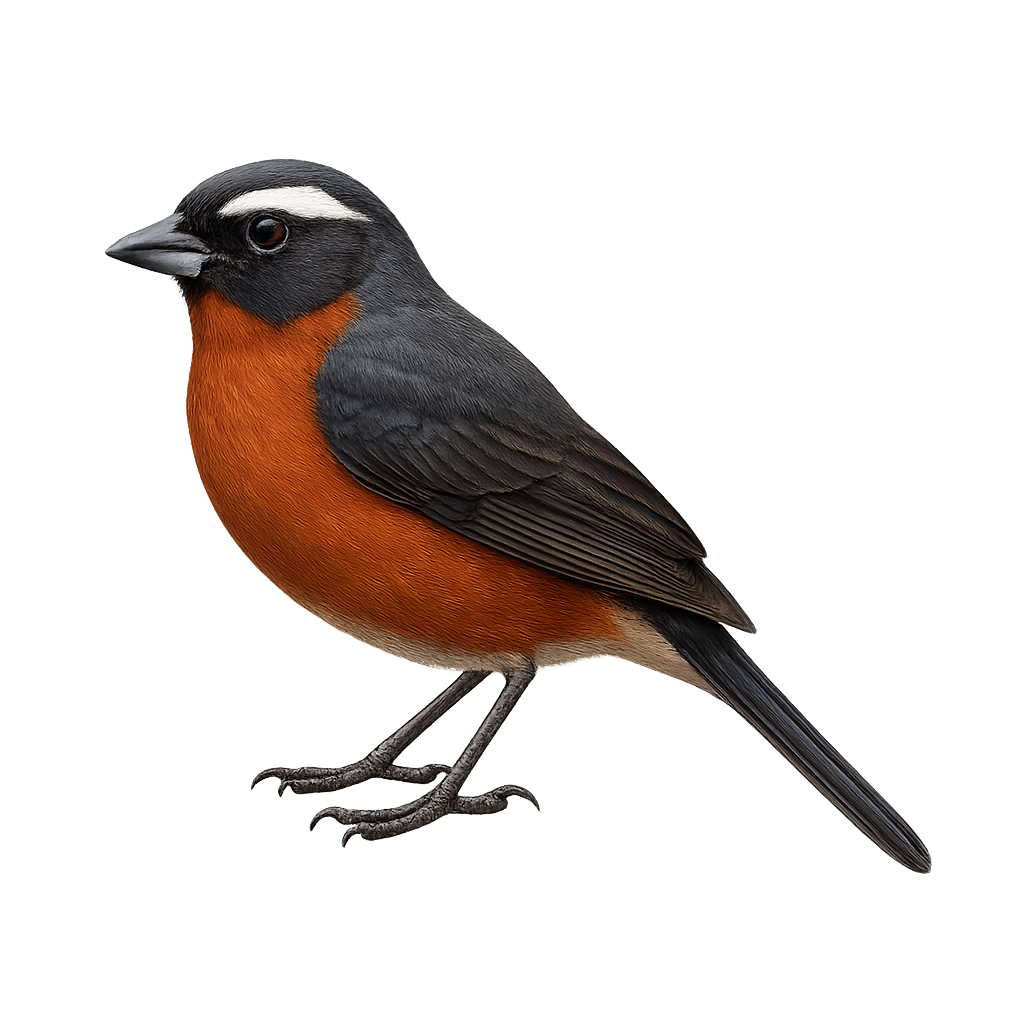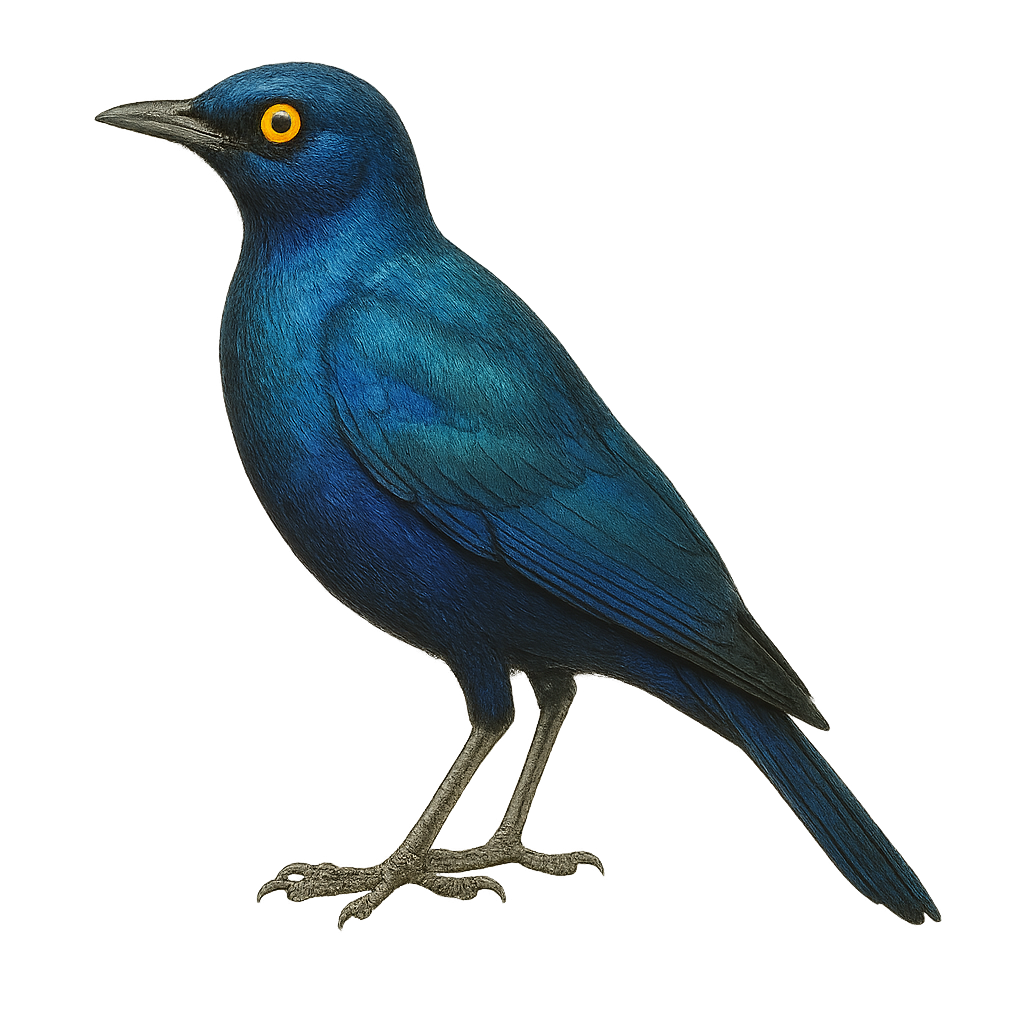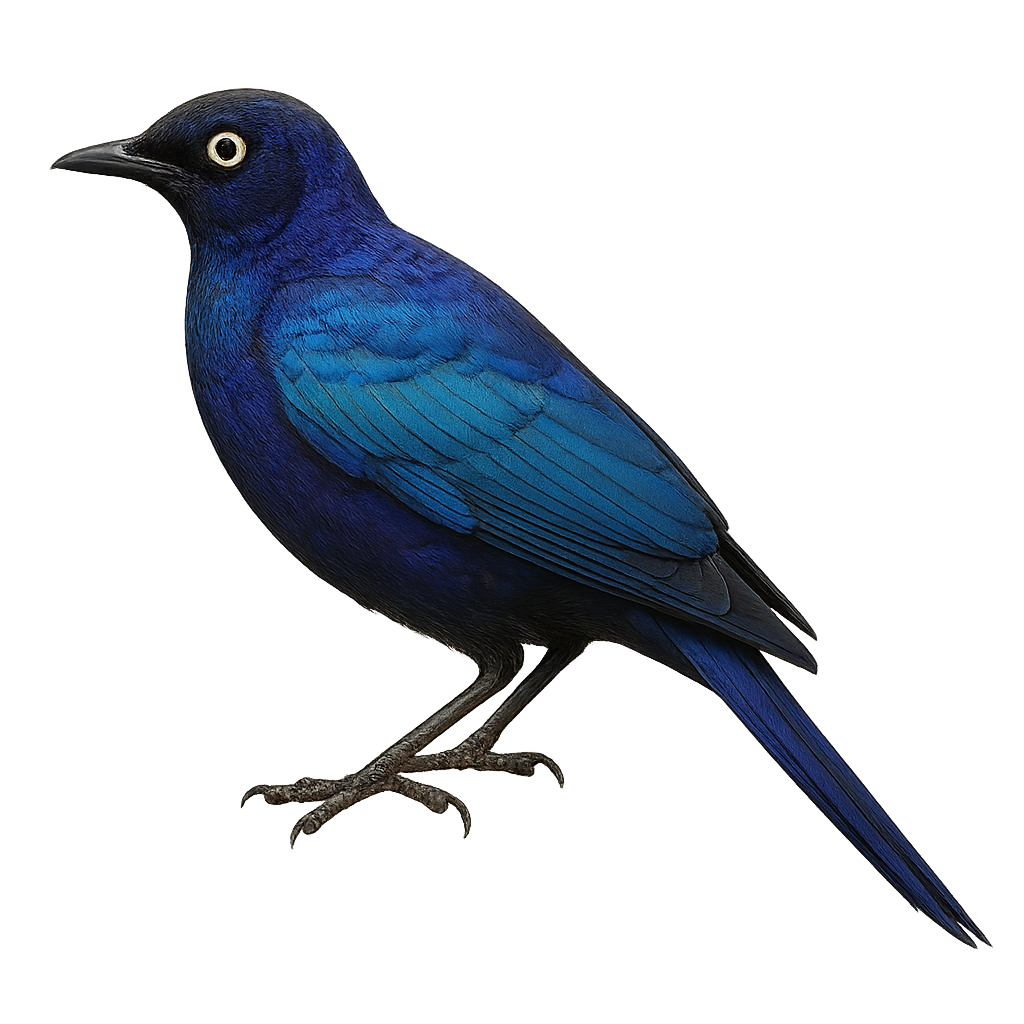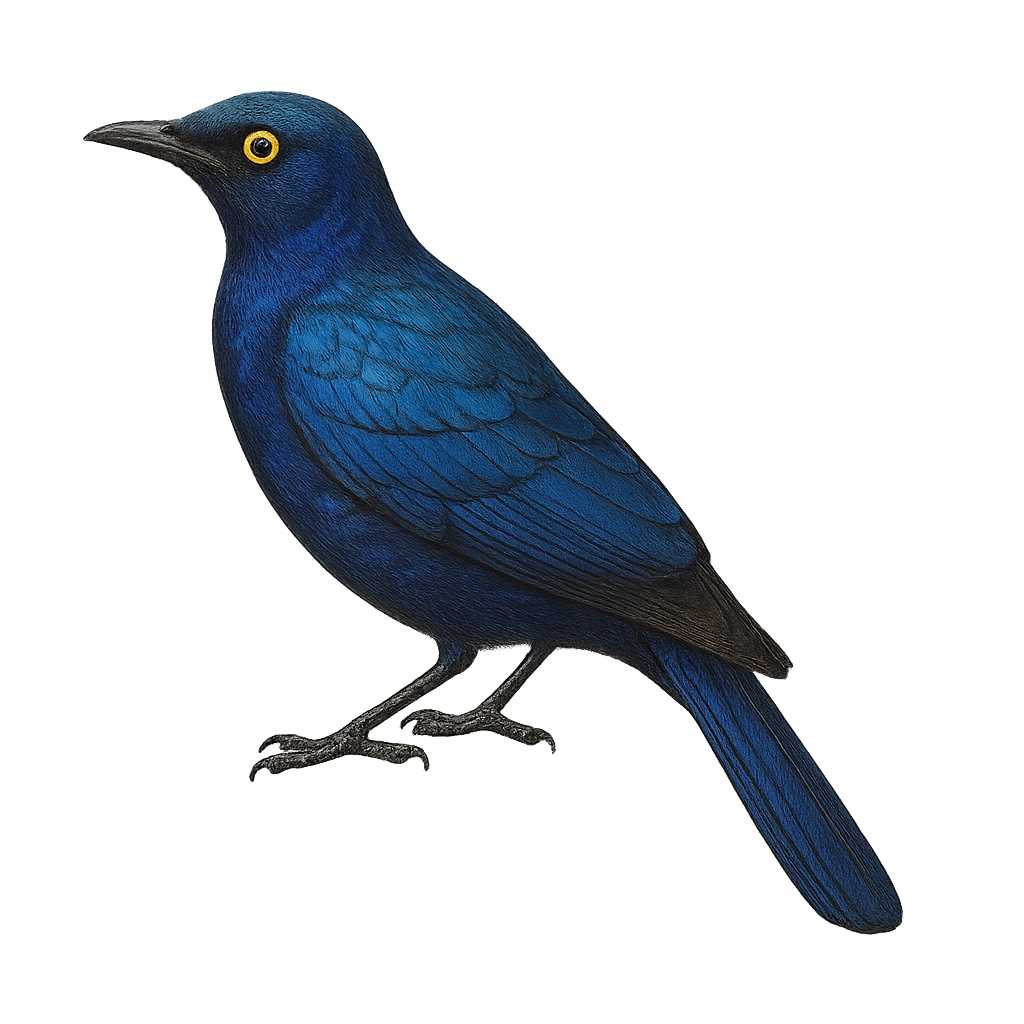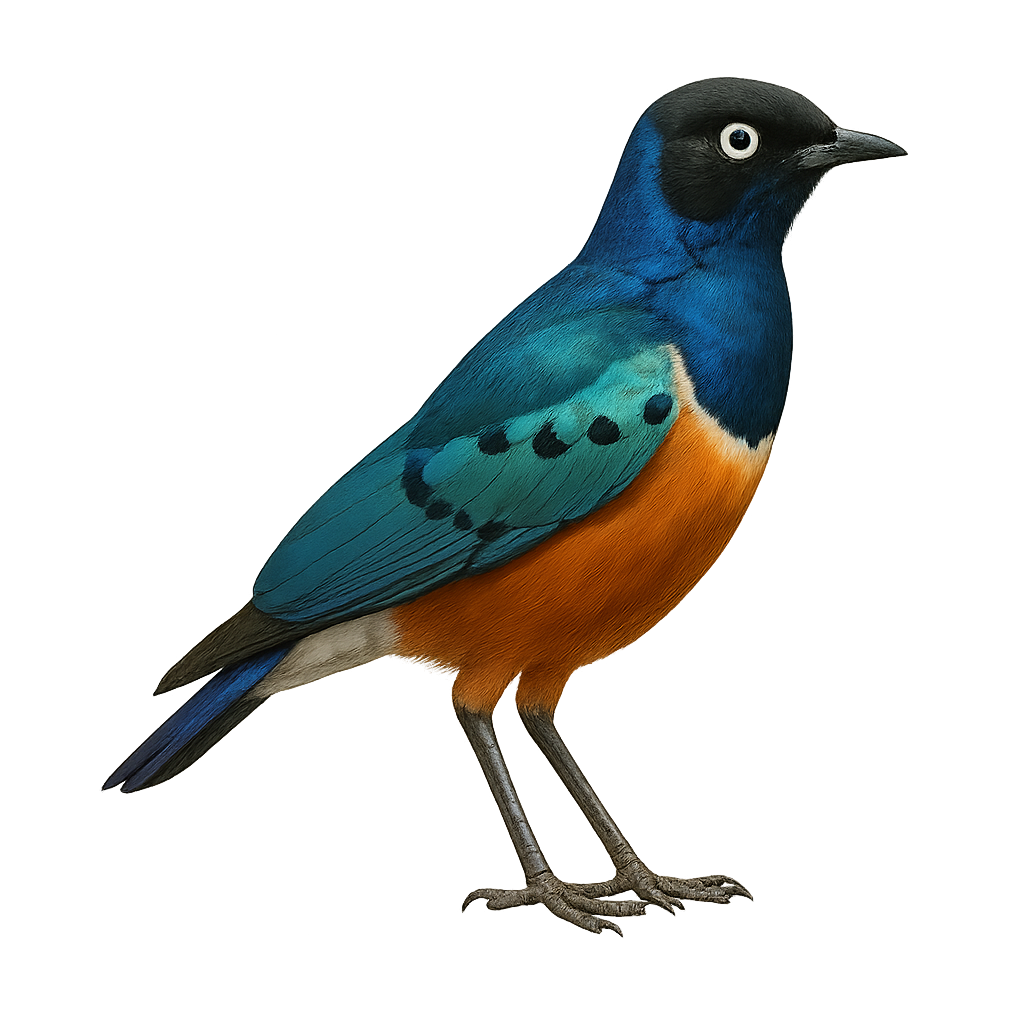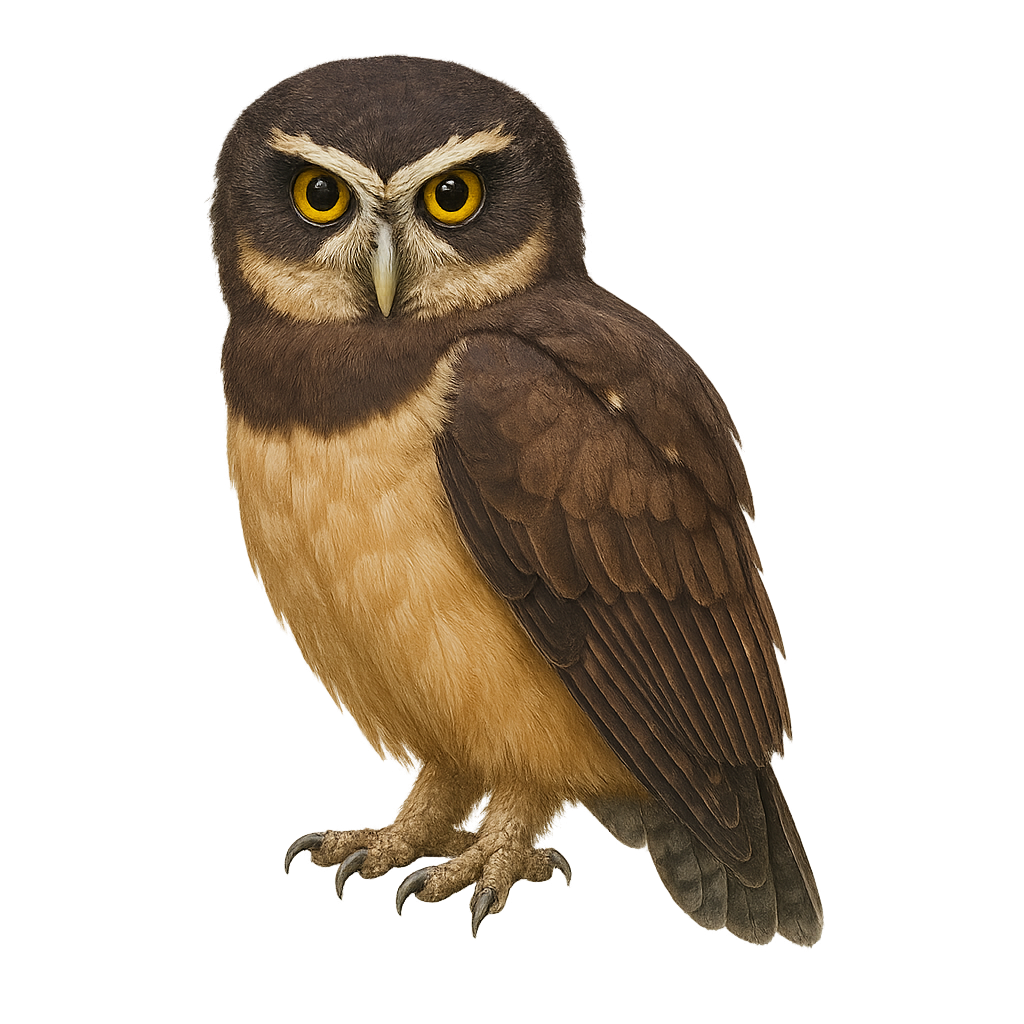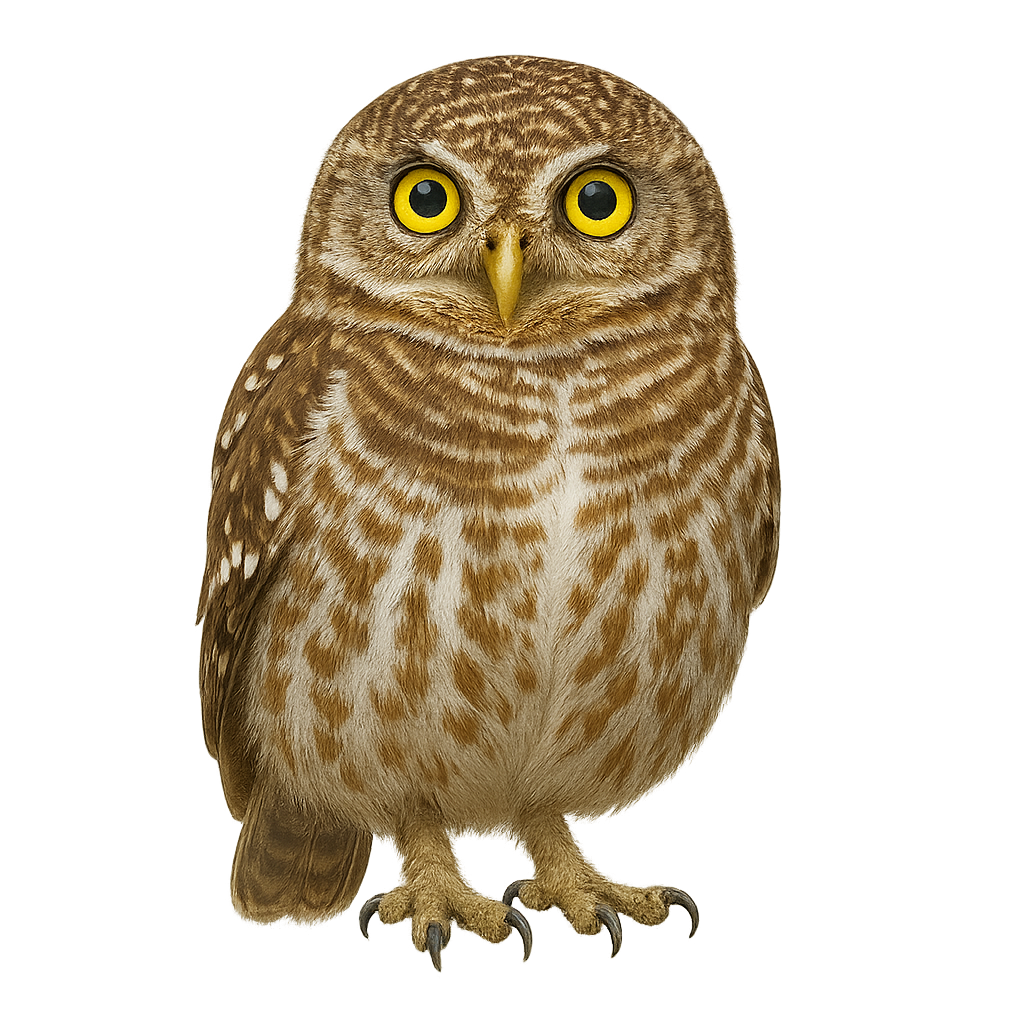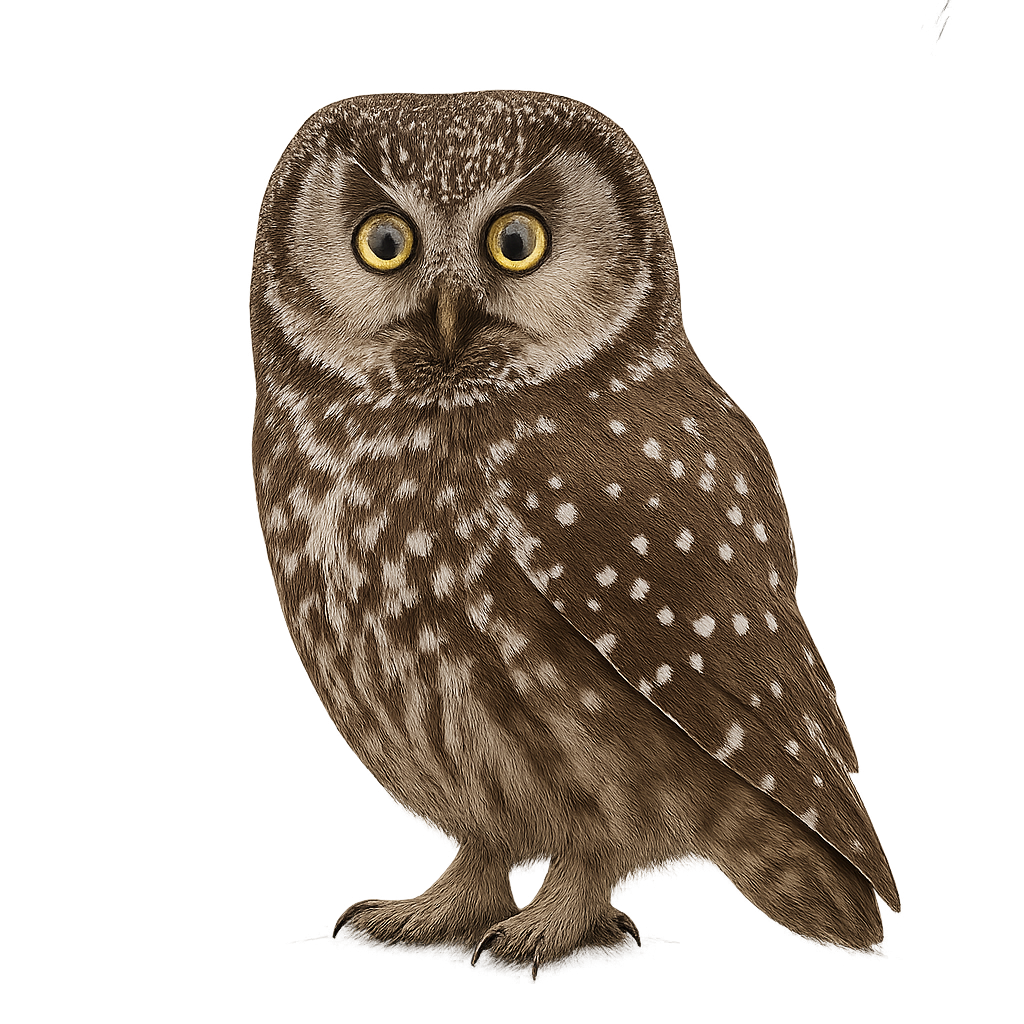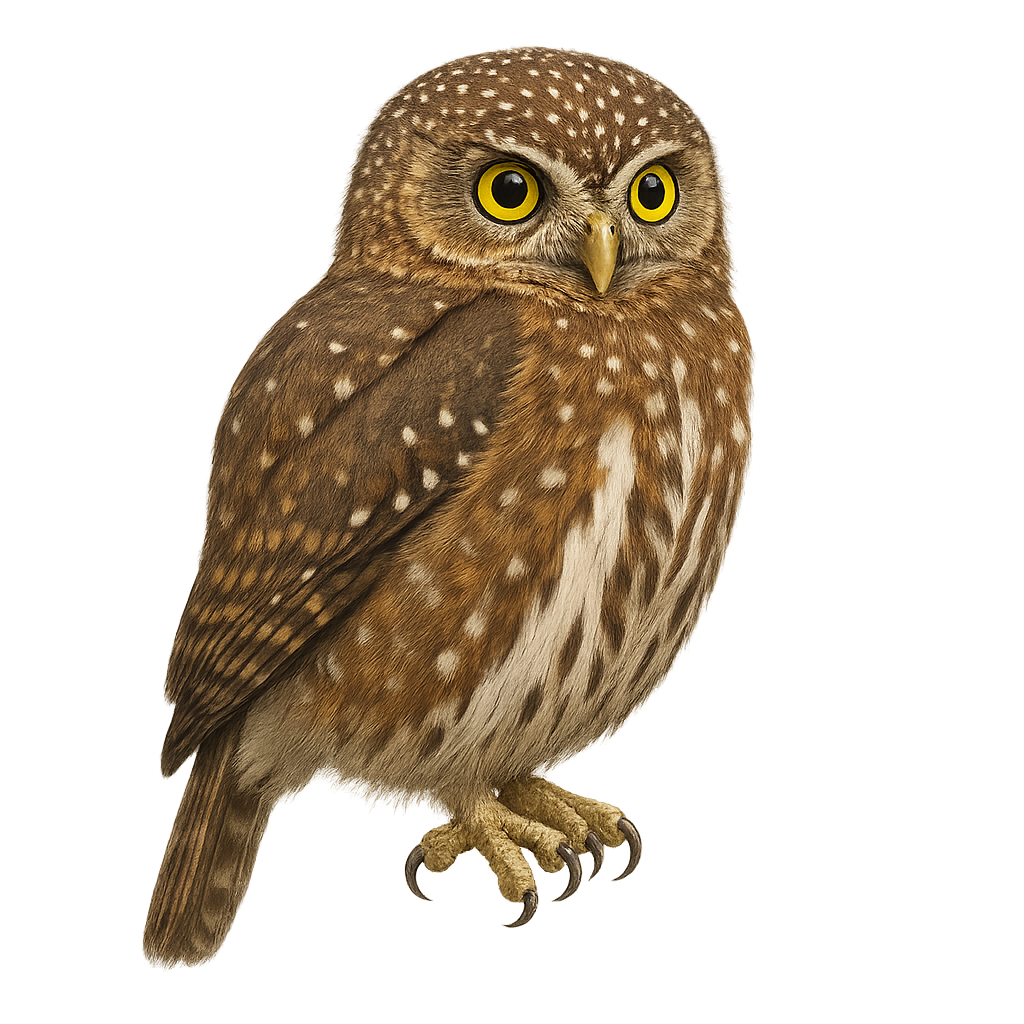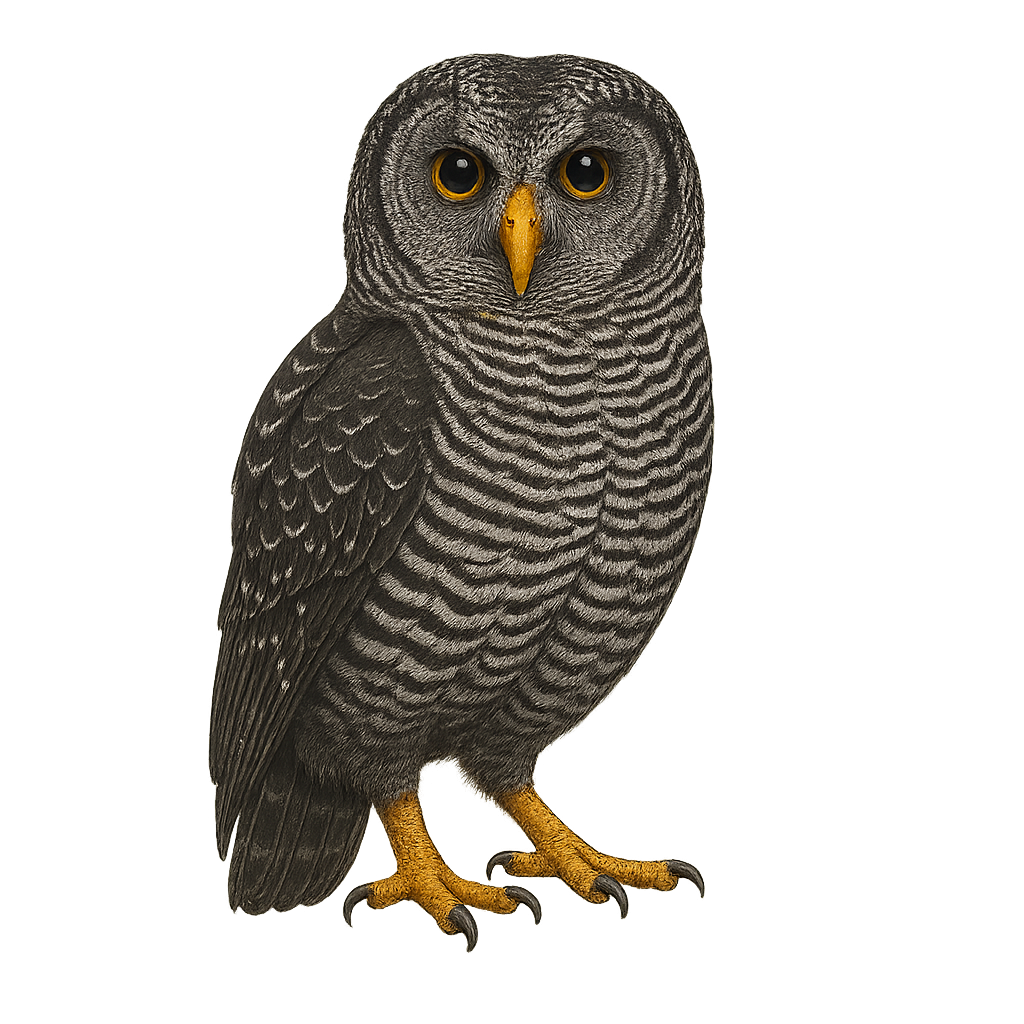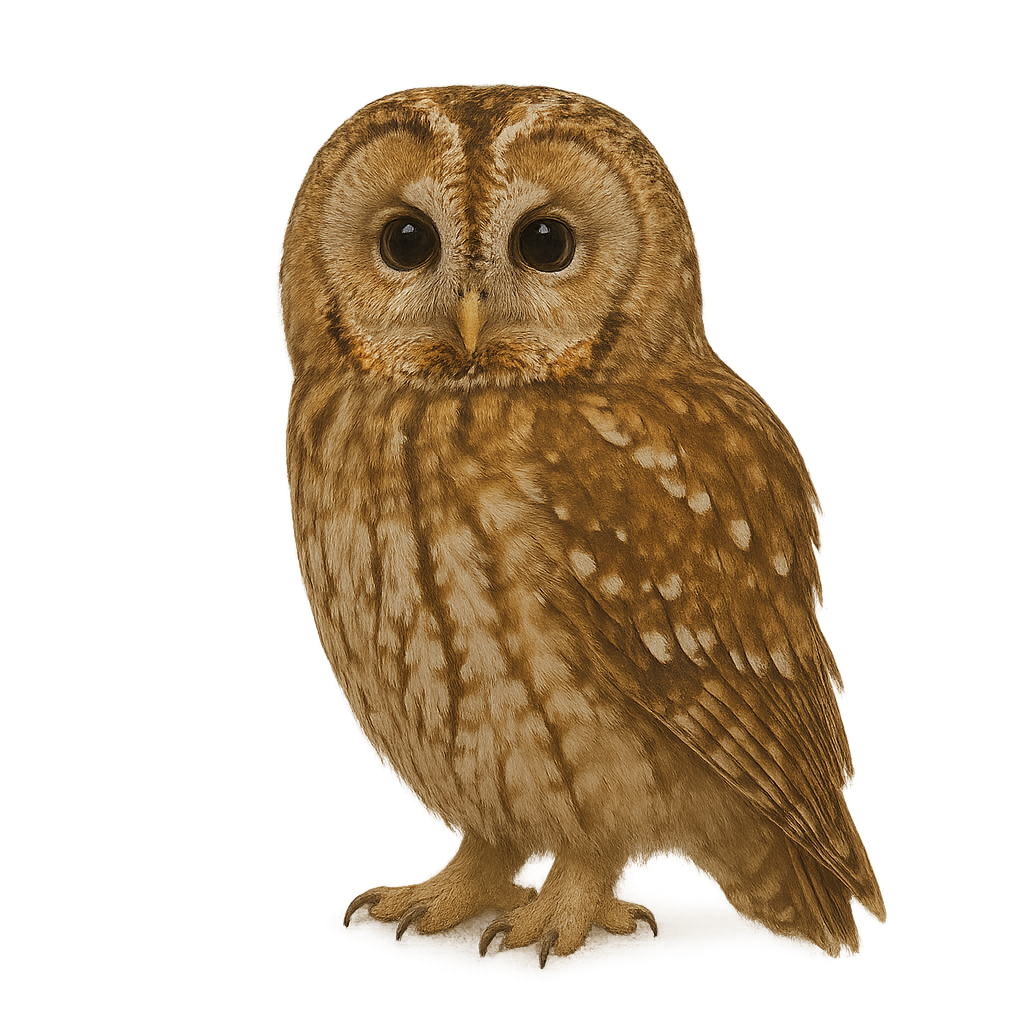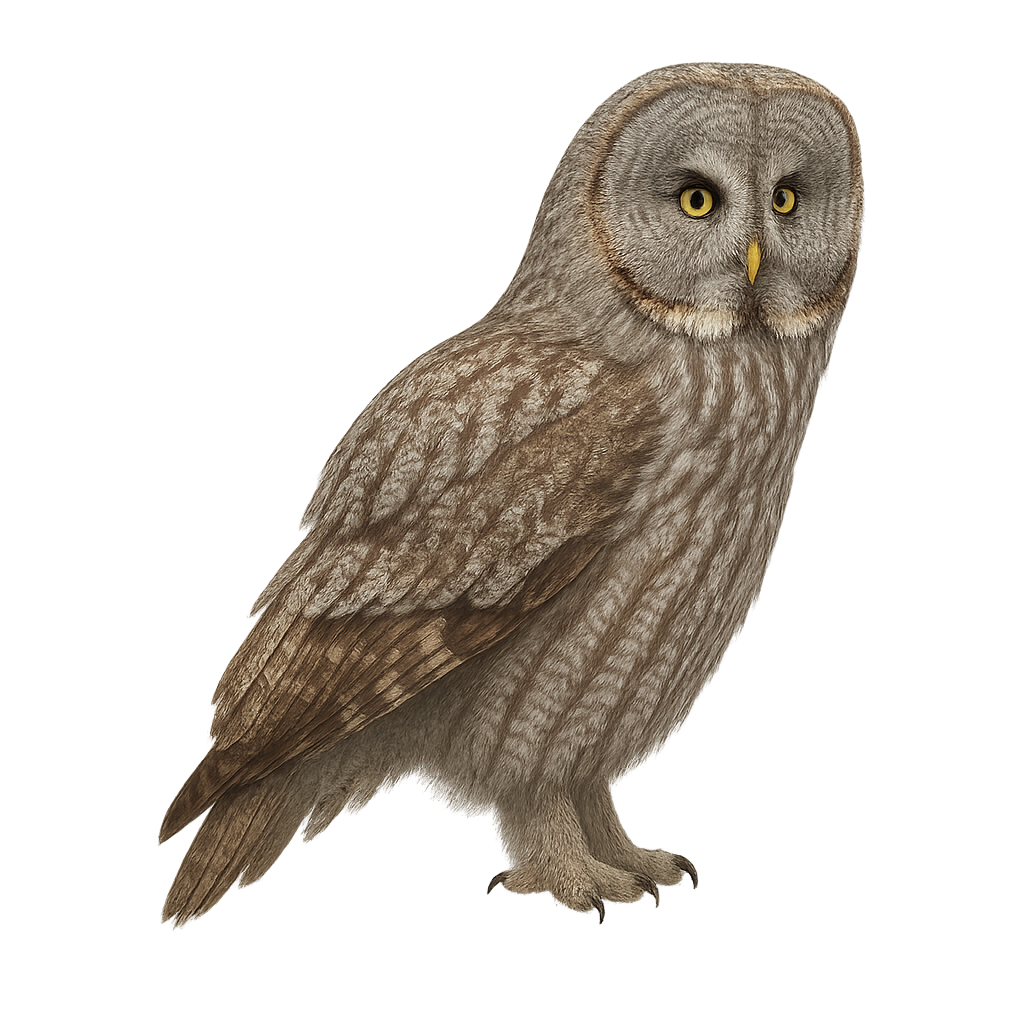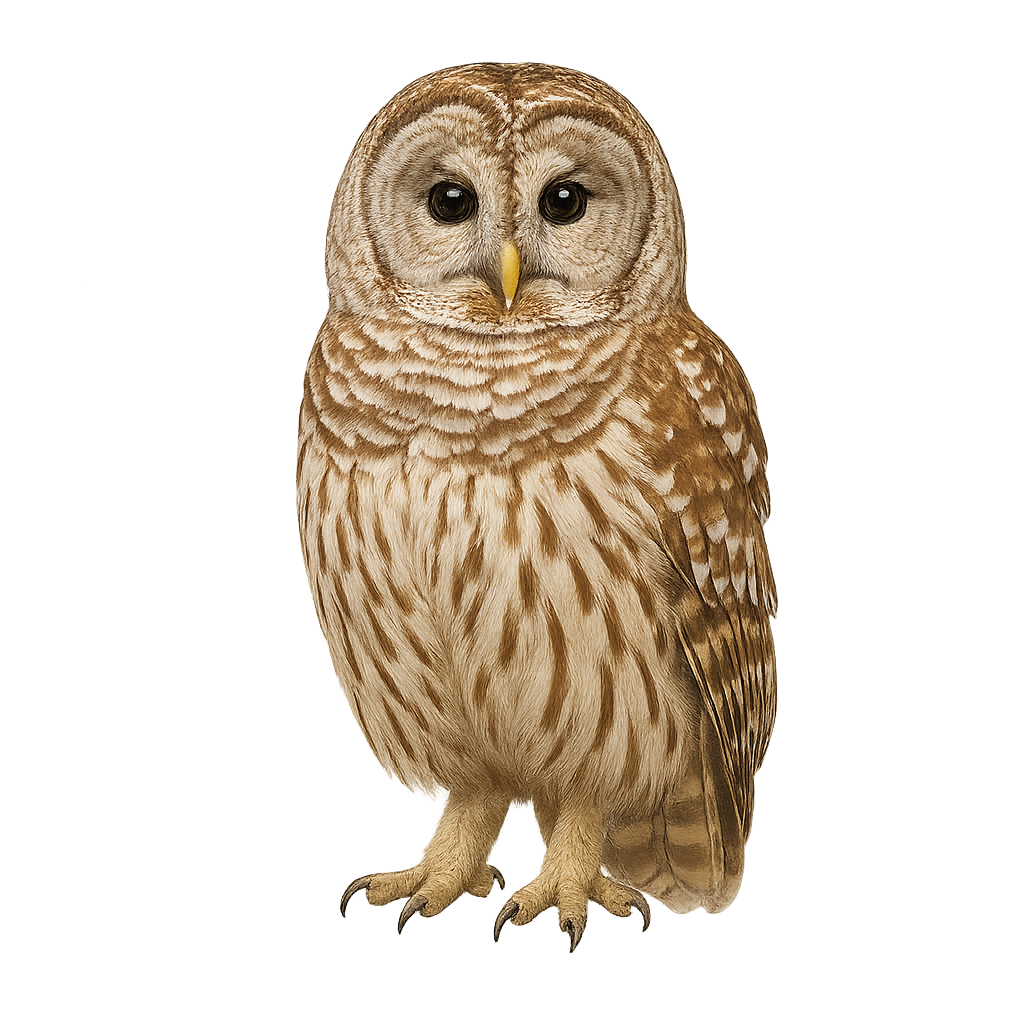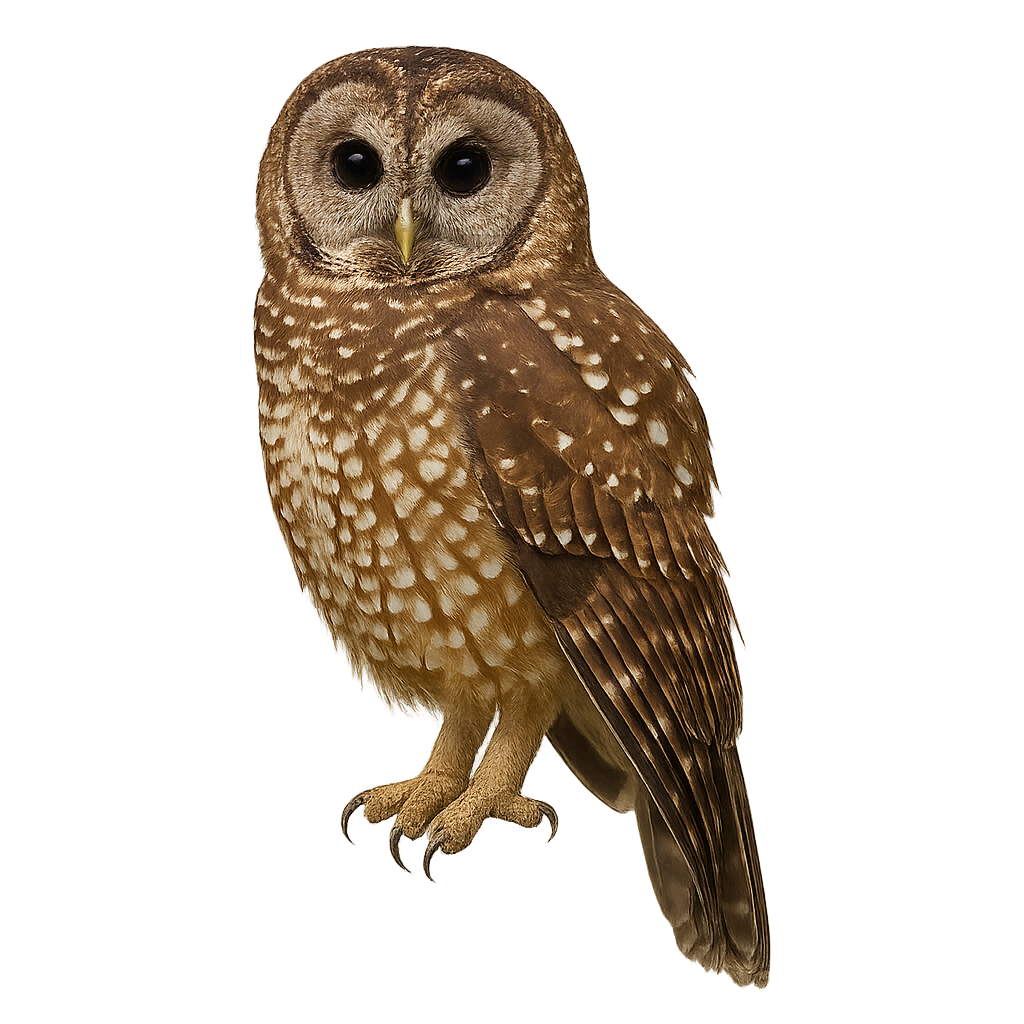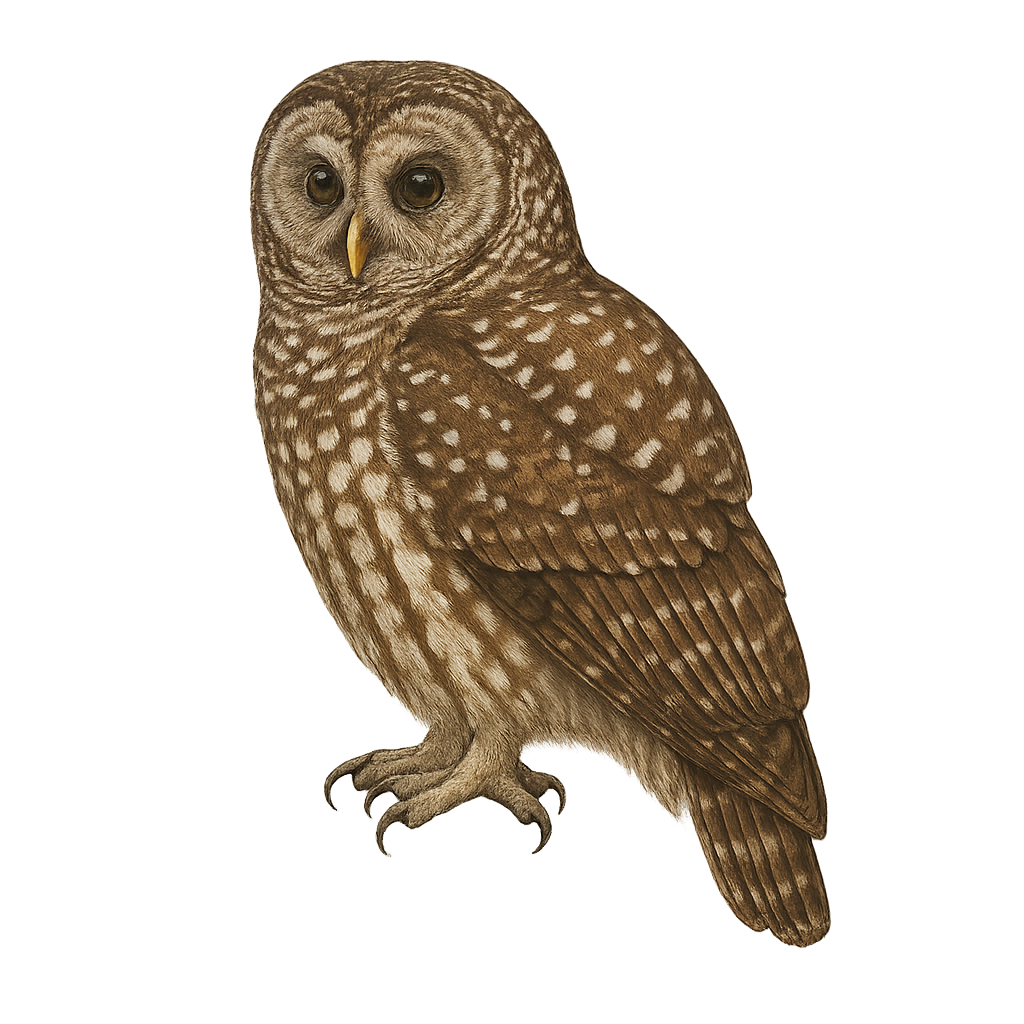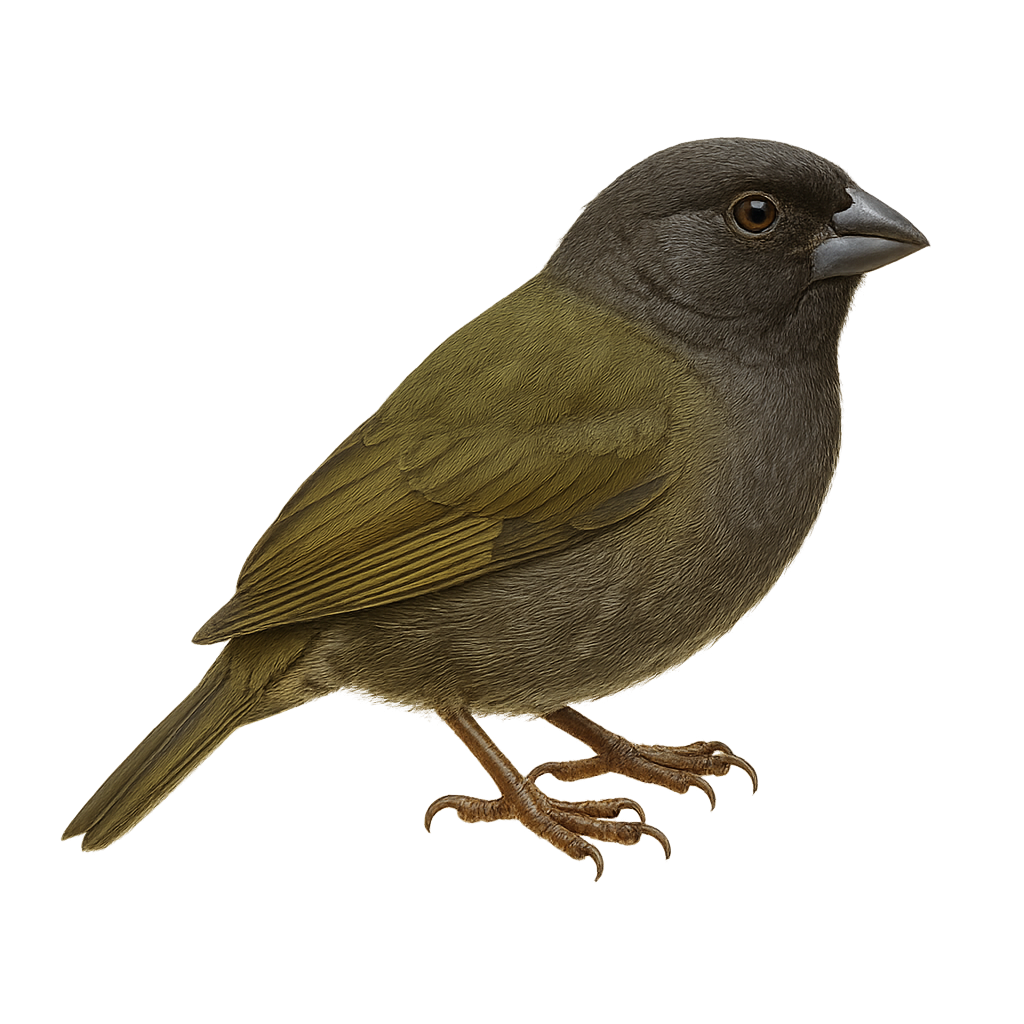The Hispaniolan Sparrow is a small passerine bird belonging to the Thraupidae family. It is primarily found in the mountainous regions and high-altitude forests of Hispaniola, which includes Haiti and the Dominican Republic. This bird is characterized by its brown-gray plumage with lighter shades on the belly and distinctive markings on the head. It is often seen in small groups, feeding on seeds and insects. The Hispaniolan Sparrow is a resilient bird, capable of adapting to various habitats, although it prefers wooded areas. Its population is stable, but it remains vulnerable to environmental changes and deforestation.
The Bolivian Brushfinch, scientifically known as Poospiza boliviana, is a medium-sized bird belonging to the Thraupidae family. It is primarily endemic to the mountainous regions of Bolivia, where it inhabits humid forests and shrublands. Its plumage is a mix of gray, brown, and white, with distinctive markings on the head and wings. This bird is often seen in small groups, feeding mainly on insects and seeds. Its ability to adapt to various habitats makes it a resilient species, although deforestation poses a potential threat to its populations. The Bolivian Brushfinch is a fascinating bird to observe, especially due to its melodious song and interesting social behaviors.
The Bolivian Warbling Finch is a bird endemic to the Bolivian Andes, known for its distinctive plumage and melodious song. This medium-sized passerine features gray and brown hues, with lighter shades on its belly. It primarily inhabits shrublands and cloud forests, where it feeds on seeds and insects. Though discreet, it is often detected by its characteristic song. Its population is currently stable, but it remains vulnerable to environmental changes and deforestation. Conservation efforts are crucial to preserving its natural habitat and ensuring its long-term survival.
The Baer's Sparrow, or Poospiza baeri, is a small passerine bird belonging to the Thraupidae family. It is primarily found in the mountainous regions of South America, particularly in Argentina. This sparrow is characterized by its subtle plumage, often in shades of brown and gray, allowing it to blend into its natural habitat. It mainly inhabits high-altitude shrublands and open grasslands. Its song is melodious yet discreet, often heard before being seen. The Baer's Sparrow is a relatively suspicious bird, preferring to keep its distance from humans.
The Black-and-chestnut Warbling Finch is a small passerine bird belonging to the Thraupidae family. It is mainly found in the mountainous regions of South America, particularly in Bolivia and Argentina. This bird is distinguished by its gray and brown plumage, with a characteristic white stripe above the eye, giving it an expressive look. It inhabits humid forests and shrublands, where it primarily feeds on insects and seeds. The Black-and-chestnut Warbling Finch is a discreet bird, often seen in small groups or pairs. Its ability to blend into its environment sometimes makes it difficult to spot, but its melodious song often reveals its presence.
The Black-backed Sierra Finch, Poospiza nigrorufa, is a small passerine bird belonging to the Thraupidae family. It is primarily found in the mountainous regions of South America, particularly in Argentina, Bolivia, and Peru. This bird is characterized by its black plumage on the back and top of the head, contrasting with a rufous belly and chest. It inhabits shrublands and high-altitude grasslands, often near watercourses. The Black-backed Sierra Finch is a discreet bird, often seen in small groups or pairs. It feeds mainly on seeds and insects, which it finds by foraging on the ground or exploring bushes.
The Alpine Chough, or Pyrrhocorax graculus, is a mountain bird from the Corvidae family. It is recognized by its glossy black plumage, bright yellow bill, and red legs. This bird is often seen in the Alps and the Pyrenees, where it moves in noisy flocks. Exceptionally agile in flight, it can skillfully maneuver in updrafts. Opportunistic, it feeds mainly on insects, fruits, and food scraps left by hikers. The chough is a sociable bird, often not very shy, and easily approaches humans. It nests in rock crevices and cliffs, usually laying three to five eggs.
The White-billed Starling is a medium-sized bird, easily recognizable by its glossy black plumage and distinctive white bill. It is primarily found in the mountainous regions of Ethiopia and Eritrea. This bird is often seen in small groups, feeding on fruits, insects, and sometimes small vertebrates. Its song is melodious, consisting of whistles and trills. It plays a crucial role in seed dispersal, aiding forest regeneration. Although relatively common in its natural habitat, it is threatened by deforestation and habitat loss.
The Cape Starling, or Lamprotornis nitens, is a bird with dazzling plumage, mainly metallic blue-green, with iridescent reflections that catch the sunlight. Its yellow eyes contrast with its plumage, adding a touch of mystery to its appearance. This bird is often seen in small groups, feeding on fruits, insects, and nectar. It is known for its melodious and varied song, which it uses to communicate with its peers. It is mainly found in savannas, open forests, and agricultural areas of sub-Saharan Africa. Although generally tolerant of humans, it can be suspicious if threatened.
The Rüppell's Starling is a striking bird known for its iridescent plumage and deep purple shoulders. It primarily inhabits the savannas and wooded areas of East Africa, feeding on fruits, insects, and occasionally small vertebrates. This sociable bird is often seen in groups, which helps protect it from predators. Its song is varied, consisting of whistles and melodious chirps. The breeding season varies by region but is often linked to the availability of food resources. Nests are typically built in tree cavities, where the female lays several eggs.
The Splendid Starling, or Lamprotornis splendidus, is a bird renowned for its iridescent plumage with metallic hues of blue, green, and violet. This medium-sized passerine, measuring about 22 to 24 cm in length, is commonly found in sub-Saharan Africa, particularly in savannas and open forests. Its black beak and yellow eyes stand out against its vibrant feathers. Sociable by nature, it lives in groups and primarily feeds on insects, fruits, and seeds. Its song is melodious, consisting of whistles and trills. The Splendid Starling is a resilient bird, capable of adapting to various environments, allowing it to thrive in diverse habitats.
The Superb Starling is a striking bird with a metallic blue plumage, bright orange belly, and white chest. It measures about 18 to 19 cm in length. This bird is commonly found in East Africa, particularly in Kenya and Tanzania, where it inhabits savannas, woodlands, and urban gardens. Known for its social behavior and melodious songs, Superb Starlings live in groups and are often seen foraging on the ground for insects, fruits, and seeds. Their nests are usually built in bushes or hollow trees.
The Daurian Jackdaw, Coloeus dauuricus, is a medium-sized bird belonging to the Corvidae family. It is characterized by its black and gray plumage, with a black cap and white cheeks. This bird is mainly found in East Asia, particularly in China, Mongolia, and Russia. It inhabits open areas, sparse forests, and agricultural lands. The Daurian Jackdaw is a sociable bird, often seen in groups. It primarily feeds on insects, seeds, and small fruits. Its behavior is generally tolerant towards humans, making it relatively easy to observe. The breeding season extends from spring to summer, with nests built in tree cavities or buildings.
The western jackdaw is a 34–39 cm corvid with dark slate-grey plumage and a black cap, notable for its pale, piercing eyes. Found throughout Europe and western Asia, it inhabits urban areas, coastal cliffs and open countryside, feeding on insects, seeds, small invertebrates and eggs. An opportunistic omnivore, it nests in natural or built cavities and may form large colonies.
The Spectacled Owl, or Pulsatrix perspicillata, is a medium-sized nocturnal raptor known for its distinctive white facial markings that resemble spectacles. It has dark brown plumage with a white chest and cream-colored belly. Found primarily in the dense tropical forests of Central and South America, this species is recognized by its deep, resonant "hoo-hoo" call. It primarily feeds on small mammals, birds, and insects. The Spectacled Owl is a solitary and territorial bird, often seen perched on low branches while hunting for prey.
The Asian Barred Owlet, or Glaucidium cuculoides, is a small nocturnal bird of prey belonging to the Strigidae family. It is mainly found in South and Southeast Asia, particularly in the forests of the Himalayas, from northern India to China and Indonesia. It is characterized by its brown plumage with white bars on the chest and wings, and its piercing yellow eyes. Measuring about 22 to 25 cm in length, it is known for its distinctive call that resembles that of a cuckoo. It primarily feeds on insects, small mammals, and birds. The Asian Barred Owlet is a discreet bird, often difficult to spot due to its plumage that blends perfectly with its forest environment.
The Ural owl (Strix uralensis) is a large nocturnal raptor (50–60 cm in body length with a wingspan of 110–125 cm), featuring soft tawny-grey plumage and a pale facial disc outlined in dark concentric rings. Distributed across mature coniferous and mixed forests of Eastern Europe and Northern Asia, it primarily preys on small mammals such as rodents and shrews, supplemented by birds and insects. It nests in old tree cavities or occasionally occupies abandoned corvid nests. Territorial year-round, it utters deep resonant hoots during the breeding season to attract mates and defend its territory. Secretive and vigilant, it often perches motionless high in the canopy to scan for prey.
Tengmalm's Owl is a small nocturnal raptor, easily recognized by its small size and large, piercing yellow eyes. It has gray-brown plumage with characteristic white markings on the head, wings, and back. Its ears are very inconspicuous, and its face is surrounded by a pale facial disc. This owl primarily inhabits coniferous forests, dense wooded areas, and mountains, where it hides in tree cavities or abandoned nests of other birds.
Tengmalm's Owl mainly hunts small mammals, birds, and insects, which it catches at night by flying silently through the forests. It is particularly active during the breeding season, when it emits characteristic calls to attract its mate. Although it is relatively discreet and often difficult to observe, Tengmalm's Owl is protected in some areas, though its population is threatened by deforestation and habitat loss.
The Costa Rican Pygmy Owl, or Glaucidium costaricanum, is a small nocturnal bird of prey found mainly in the mountainous forests of Costa Rica and Panama. It measures about 15 cm in length and is characterized by its brown plumage speckled with white, piercing yellow eyes, and round head. This species is known for its ability to hunt small mammals, birds, and insects, thanks to its exceptional night vision and silent flight. Although primarily nocturnal, it can sometimes be seen at dawn or dusk. The Costa Rican Pygmy Owl is a territorial, often solitary bird that uses tree cavities for nesting.
The Northern Hawk Owl is a unique nocturnal raptor, easily recognized by its large yellow eyes and its plumage marked with white and gray-brown patterns. It has a slender build with a round head, small size, and broad wings adapted for silent flight. It is primarily found in coniferous forests of northern regions, particularly in wooded areas of North America, Northern Europe, and Russia.
This raptor primarily hunts small mammals, birds, and insects, which it catches with its silent flight skills. The Northern Hawk Owl is also known for its ability to hunt during the day if necessary, especially during the breeding season. It is a relatively discreet bird, often feeding near open areas where it can spot its prey. While its population remains stable in some regions, it is threatened by deforestation and the loss of its natural habitat. It is protected in many areas to preserve its coniferous forests.
The Black-banded Owl, or Strix huhula, is a nocturnal bird of prey primarily inhabiting the tropical forests of South America. It is recognizable by its dark plumage, speckled with white bands, and its large dark eyes that provide excellent night vision. Measuring about 35 to 40 cm in length, it primarily feeds on small mammals, insects, and occasionally other birds. Its call is a deep, resonant hoot often heard at night. Though discreet, it plays a crucial role in the ecosystem by regulating prey populations.
The Tawny Owl is one of the most common owls in Europe, easily recognized by its round face forming a facial disc and its large, piercing black eyes. Its plumage is typically brown, with irregular white spots on the belly and back. It has a stocky body, broad wings, and silent flight, which is suited to its nocturnal hunting. This nocturnal raptor primarily inhabits broadleaf and mixed forests, as well as lowland wooded areas.
The Tawny Owl primarily hunts small mammals like rodents, as well as birds, insects, and worms. It uses its ability to fly silently to capture its prey, often in open areas like clearings, forest edges, or fields. It is also known for its characteristic calls, a deep, melodious "hoo-hoo." While its population remains stable in many parts of Europe, the Tawny Owl can be affected by habitat loss, light pollution, and human disturbances.
The Great Grey Owl is a large nocturnal raptor, easily recognizable by its broad facial disc and piercing yellow eyes. Its plumage is primarily gray and brown, with lighter markings on the belly and wings. It has a massive build, a round head, and long wings that allow it to fly silently. This raptor primarily inhabits boreal forests and northern regions of Europe, Asia, and North America.
The Great Grey Owl primarily hunts small mammals, such as hares, rodents, and birds. It has a remarkable ability to locate its prey with its keen hearing and silent flight. It is a solitary owl, preferring dense forests where it can hide during the day. While its population remains generally stable, it is threatened by deforestation, habitat loss, and human disturbances. It is protected in many areas to ensure the preservation of its forest habitats.
The Brown Wood Owl, or Strix leptogrammica, is a nocturnal bird of prey belonging to the Strigidae family. It is primarily found in South and Southeast Asia, inhabiting dense forests and wooded areas. This owl is characterized by its dark brown plumage with lighter patterns, as well as its dark, expressive eyes. Known for its deep, resonant call, often heard at night, the Brown Wood Owl feeds mainly on small mammals, birds, and insects. It is a silent hunter, using its keen hearing to locate prey in the dark. Although relatively discreet, it plays an important role in the ecosystem by regulating rodent populations.
The Pearl-spotted Owlet, or Glaucidium perlatum, is a small nocturnal bird of prey belonging to the Strigidae family. It is easily recognizable by its white spots on the back and piercing yellow eyes. Measuring about 20 cm in length, it weighs between 60 and 80 grams. It primarily inhabits savannas and open forests in sub-Saharan Africa. Although mainly nocturnal, it can be active at dusk. Its diet consists mainly of insects, small mammals, and birds. It is known for its distinctive call, often heard at dusk and dawn. This species is relatively tolerant of human presence, making it easier to observe than other nocturnal raptors.
The Barred Owl is a large nocturnal raptor, easily identifiable by its circular face forming a facial disc and its large yellow eyes. Its plumage is primarily gray-brown, marked with dark streaks on the head, back, and wings, from which it gets its name. This owl has a robust, stocky body, with broad wings and silent flight, perfectly suited to its nocturnal hunting in forests.
It primarily inhabits mixed and deciduous forests, especially in regions of North America. The Barred Owl hunts small mammals like rodents, birds, and occasionally insects, which it captures using its ability to fly silently. It is a solitary predator, hiding during the day in tree cavities or abandoned nests of other animals. While its population remains stable, the Barred Owl is vulnerable to disturbances in its natural habitat, such as deforestation and urbanization. It is protected in many regions to preserve its forest habitats.
The spotted owl is a nocturnal owl native to the dense forests of the western United States and Mexico. It is recognizable by its spotted brown plumage, large dark eyes, and round face. It primarily feeds on small mammals, birds, and insects, hunting at night. Threatened by habitat loss, it is protected in certain regions.
The Northern Spotted Owl is a subspecies of the spotted owl, primarily found in the old-growth coniferous forests of the western coast of North America. It is medium-sized, with dark eyes and brown plumage speckled with white. This owl is a nocturnal predator, feeding mainly on small mammals. It is known for its reliance on mature forest habitats, making it vulnerable to deforestation. Due to habitat loss and competition with the barred owl, it is classified as a threatened species. Conservation of its natural habitats is crucial for its survival.
The Pel's Fishing Owl is a nocturnal bird of prey belonging to the Strigidae family, predominantly found in sub-Saharan Africa. It is distinguished by its rufous-brown plumage, piercing yellow eyes, and large size, reaching up to 63 cm in height. This owl is particularly adapted to fishing, with powerful talons and unfeathered legs, perfect for catching fish. It prefers habitats near water bodies, such as riparian forests and swamps. Its distinctive call, a deep "hoo-hoo," often echoes at dusk. Though elusive, it serves as an important indicator of the health of aquatic ecosystems.
The Black Finch, or Melanospiza bicolor, is a small passerine bird endemic to certain Caribbean islands. It is primarily recognized for its glossy black plumage in males, while females display browner tones. This passerine is distinguished by its robust beak, adapted to its granivorous diet. It frequents dry forests, shrubs, and bushy areas, where it primarily feeds on seeds and small insects. Although discreet, the Black Finch is often spotted thanks to its melodious song. Its population is currently stable, but it remains vulnerable to disturbances in its natural habitat.


